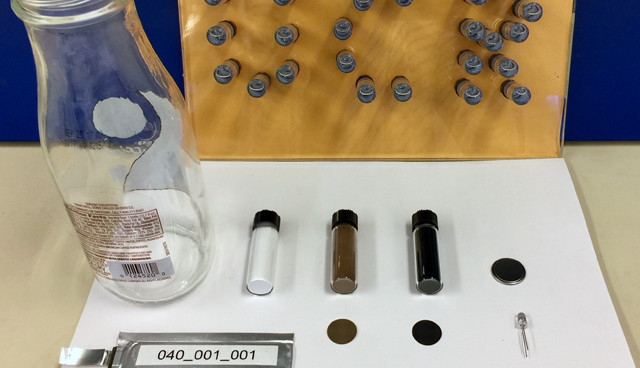Rechargeables from recyclables
April 30, 2017
on
on

Glass contains a whole lot of silicon dioxide and silicon - sounds like the sort of base material you might use to build electronic devices. So we should be able to build some sort of electronic devices from the contents of the glass waste collection point, right? Researchers have in fact succeeded in producing a nanomaterial suitable for use as battery electrodes. Button cells equipped with them have been shown to store four times the energy in comparison to conventional battery technology.
There is certainly loads of reclaimed glass in Germany – known as ‘the land of waste separation’ - and also in the US there are concerns as to what use the old glass can be put. After all, glass is made up of a high percentage of SiO2. Scientists from the University of California in Riverside have found a new use for this resource: they have used a low-cost chemical process to create nanosilicon anodes for high-performance lithium-ion batteries. Normally, electrodes made from graphite are used for such batteries, although anodes made from silicon have a theoretically capacity up to 10 times higher, expansion and shrinkage during charge and discharge make conventional silicon anodes unstable. Silicon nanostructures however cope with the stresses much more effectively.
According to Changling Li, a graduate student in materials science and engineering who is the lead author of the paper, one glass bottle provides enough nanosilicon for hundreds of coin cell batteries or three to five pouch cell batteries. Changling Li’s group used old glass bottles as raw material and ground them to a nano-powder. Then by using a magnesiothermic reduction process the silicon dioxide is transformed into nanostructured silicon which can then be coated with a carbon layer. Button cell using anodes produced by this method demonstrated a capacity of 1.42 Ah / g-1 at C/2 rate after 400 charging cycles. In comparison, cells using normal graphite electrodes only produced about 372 mAh. The research report entitled ‘Silicon Derived from Glass Bottles as Anode Materials for Lithium Ion Full Cell Batteries’ was published in Nature.
There is certainly loads of reclaimed glass in Germany – known as ‘the land of waste separation’ - and also in the US there are concerns as to what use the old glass can be put. After all, glass is made up of a high percentage of SiO2. Scientists from the University of California in Riverside have found a new use for this resource: they have used a low-cost chemical process to create nanosilicon anodes for high-performance lithium-ion batteries. Normally, electrodes made from graphite are used for such batteries, although anodes made from silicon have a theoretically capacity up to 10 times higher, expansion and shrinkage during charge and discharge make conventional silicon anodes unstable. Silicon nanostructures however cope with the stresses much more effectively.
According to Changling Li, a graduate student in materials science and engineering who is the lead author of the paper, one glass bottle provides enough nanosilicon for hundreds of coin cell batteries or three to five pouch cell batteries. Changling Li’s group used old glass bottles as raw material and ground them to a nano-powder. Then by using a magnesiothermic reduction process the silicon dioxide is transformed into nanostructured silicon which can then be coated with a carbon layer. Button cell using anodes produced by this method demonstrated a capacity of 1.42 Ah / g-1 at C/2 rate after 400 charging cycles. In comparison, cells using normal graphite electrodes only produced about 372 mAh. The research report entitled ‘Silicon Derived from Glass Bottles as Anode Materials for Lithium Ion Full Cell Batteries’ was published in Nature.
Read full article
Hide full article



Discussion (0 comments)